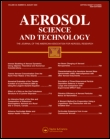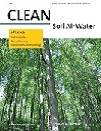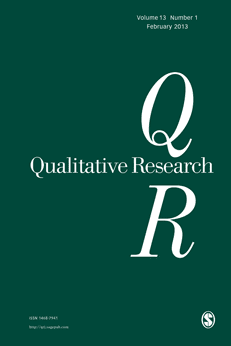
Air Quality Atmosphere and Health
Scope & Guideline
Transforming Atmospheric Science into Healthier Outcomes
Introduction
Aims and Scopes
- Air Quality Assessment and Monitoring:
The journal emphasizes the importance of monitoring and assessing air quality using various methodologies, including ambient air sampling, remote sensing, and modeling techniques. This includes the evaluation of pollutants like PM2.5, PM10, NOx, and VOCs, along with their sources and distribution. - Health Impact Studies:
A core focus of the journal is to explore the health impacts associated with air pollution exposure. This includes epidemiological studies that investigate correlations between air quality and respiratory, cardiovascular, and other health outcomes. - Environmental Policy and Regulation:
The journal also covers research on environmental policies and their effectiveness in mitigating air pollution. This includes analyses of regulatory frameworks, public health initiatives, and their implications for air quality improvement. - Emerging Pollutants and Health Risks:
Research on emerging pollutants, such as microplastics and VOCs from various sources (including household products), is becoming increasingly significant. The journal aims to highlight the health risks associated with these pollutants. - Impact of Climate Change on Air Quality:
The journal addresses the interactions between climate change and air quality, exploring how changing climatic conditions influence pollutant levels and the subsequent health impacts.
Trending and Emerging
- Impact of COVID-19 on Air Quality:
The journal has seen an increase in studies examining how the COVID-19 pandemic and associated lockdown measures have affected air quality levels globally, providing insights into temporary reductions in pollution and their implications. - Microplastics and Indoor Air Quality:
Research on microplastics as a new category of air pollutant is gaining traction, especially regarding their sources, health effects, and prevalence in indoor environments. - Health Disparities and Environmental Justice:
Emerging studies are increasingly focusing on the intersection of air pollution, health disparities, and environmental justice, examining how socio-economic factors influence exposure and health outcomes. - Use of Machine Learning and Advanced Modeling Techniques:
There is a growing trend towards utilizing machine learning and advanced statistical methods for predicting air quality and assessing health impacts, enhancing the precision of research findings. - Real-Time Monitoring Technologies:
The journal is increasingly publishing research on the development and application of real-time air quality monitoring technologies, which are crucial for timely health risk assessments and policy-making.
Declining or Waning
- Traditional Source Apportionment:
Although source apportionment remains important, there has been a noticeable decline in studies relying solely on traditional methods without integrating advanced modeling techniques or machine learning approaches. - Static Indoor Air Quality Studies:
Research focused solely on static indoor air quality measurements, without considering dynamic factors such as occupant behavior and real-time monitoring, seems to have decreased in favor of more comprehensive, real-time assessments. - Single-Pollutant Focus:
There is a waning interest in studies that focus on the health impacts of single pollutants. The trend is shifting towards multi-pollutant studies that consider the combined effects of various air quality parameters.
Similar Journals

WATER AIR AND SOIL POLLUTION
Exploring the intersections of water, air, and soil for a cleaner planet.Water Air and Soil Pollution is a leading peer-reviewed journal published by Springer International Publishing AG, focusing on the vital fields of environmental sciences, ecological modeling, and pollution management. Since its inception in 1971, the journal has contributed significantly to advancing knowledge in the interdisciplinary realms of Water Science and Technology, Environmental Chemistry, and Environmental Engineering. With an impressive history, the journal currently holds a Q2 quartile ranking in several categories, reflecting its high impact and relevance in these essential areas of research. Its rankings—such as #95 in Environmental Science: Water Science and Technology—illustrate its standing in the academic community. Researchers and practitioners alike can access a wealth of studies and reviews that aim to address pressing environmental concerns and foster sustainable practices, although the journal is not Open Access. Located in Switzerland, Water Air and Soil Pollution continues to be a critical resource for those dedicated to understanding and mitigating pollution, making it an indispensable tool for anyone engaged in ecological and environmental research.

Environnement Risques & Sante
Advancing Knowledge for a Safer TomorrowEnvironnement Risques & Sante is a prominent journal focused on the intersection of environmental issues, public health, and safety, offering a platform for scholarly discourse on the critical challenges posed by environmental risks to human health. Published by JOHN LIBBEY EUROTEXT LTD, this journal aims to disseminate impactful research that enhances our understanding of toxicology, mutagenesis, and their implications for public health policy and practices. Though it ceased coverage in Scopus in 2021, its historical contributions remain relevant, addressing urgent topics in environmental science and occupational health. Researchers and professionals engaged in these fields will find valuable insights and findings that inform practice and promote sustainable solutions. For interested readers, further exploration of the journal can provide essential knowledge in coping with contemporary environmental health challenges.

ATMOSFERA
Exploring the Dynamics of Our AtmosphereATMOSFERA is a prestigious journal published by CENTRO CIENCIAS ATMOSFERA UNAM, dedicated to advancing the field of Atmospheric Science. With an ISSN of 0187-6236 and an E-ISSN of 2395-8812, this bilingual journal has been a vital resource for researchers since its inception in 1988. Located in Mexico City, the journal serves as a platform for high-quality original research, reviews, and case studies that explore various atmospheric phenomena, climate issues, and environmental challenges. Although currently categorized in the Q4 quartile of Atmospheric Science, ATMOSFERA aims to contribute to the growing body of knowledge in the field and improve its ranking over the next few years, emphasizing rigorous scientific inquiry and fostering collaboration among scholars. Its accessibility and commitment to open communication make it an essential reference for professionals and students striving to understand and address complex atmospheric dynamics.

International Journal of Occupational Medicine and Environmental Health
Innovating solutions for healthier workplaces and environments.The International Journal of Occupational Medicine and Environmental Health is a distinguished journal dedicated to advancing the fields of occupational medicine and environmental health. Published by NOFER Institute of Occupational Medicine in Poland, this open-access journal has been providing a platform for innovative research since 2011. With an ISSN of 1232-1087 and an E-ISSN of 1896-494X, it allows for wide dissemination of findings that address contemporary challenges in public health, occupational settings, and environmental issues. The journal has established itself as a vital resource, achieving a Q3 ranking in both Medicine (miscellaneous) and Public Health, Environmental and Occupational Health categories as of 2023, reflecting its commitment to quality and relevance. With a Scopus rank of #295 out of 665 in its domain, it places in the 55th percentile, affirming its growing impact within the scientific community. Researchers, professionals, and students seeking to enhance their knowledge and contribute to the discourse will find the rich content and comprehensive studies presented in this journal invaluable. Explore cutting-edge research from 1994 to the present, and join the conversation on occupational and environmental health issues that profoundly affect global communities.

AEROSOL SCIENCE AND TECHNOLOGY
Exploring the Dynamics of Aerosols in Our EnvironmentAerosol Science and Technology is a premier academic journal dedicated to the study of aerosols, their properties, and their interactions with the environment, published by Taylor & Francis Inc. Since its inception in 1981, the journal has established itself as a leading source of research, boasting a commendable impact factor which underscores its relevance and influence in the fields of Environmental Chemistry, Materials Science, and Pollution, consistently ranking in the Q2 Quartile. With its comprehensive coverage of the latest advancements and interdisciplinary approaches, the journal serves as an essential resource for researchers, professionals, and students who seek to deepen their understanding of aerosol science and its applications. Although it does not currently offer Open Access options, its rigorous peer-review process ensures the publication of high-quality research that contributes significantly to both theoretical and practical advancements in the field. Readers will benefit from the journal's insightful articles that explore the complexities of aerosols and their impact on climate change, air quality, and health outcomes, making it a pivotal platform for disseminating cutting-edge findings up until 2024.

Journal of Korean Society for Atmospheric Environment
Innovating solutions for cleaner air and a healthier planet.Journal of Korean Society for Atmospheric Environment is a leading platform for innovative research in the fields of environmental chemistry, engineering, and pollution science. Published by the Korean Society for Atmospheric Environment, this journal is dedicated to disseminating high-quality research findings that address the crucial challenges of atmospheric environment management and sustainability. The journal operates from South Korea and features a diverse range of articles exploring contemporary environmental issues, including air quality assessment and pollutant impact studies. Although it is not an open-access journal, it maintains a notable presence in the academic community with its categorization in Q3 in Environmental Engineering and Q4 in Environmental Chemistry, as of 2023. With its focus on interdisciplinary research, the Journal of Korean Society for Atmospheric Environment serves as an essential resource for researchers, professionals, and students interested in advancing knowledge and practices related to atmospheric environmental sciences.

Journal of Environmental Health Science and Engineering
Advancing the frontiers of environmental health and engineering.Journal of Environmental Health Science and Engineering, published by Springer, stands at the forefront of scholarly research in environmental health and engineering. With an impressive E-ISSN of 2052-336X and a significant impact factor reflected in its Q2 quartile rankings across various essential categories—including Applied Microbiology, Environmental Engineering, and Public Health—the journal serves as a vital platform for disseminating high-quality research from 2012 to 2024. Its rankings in fields such as Environmental Science and Waste Management position it as a distinguished resource for professionals and academics aiming to advance their understanding of contemporary environmental challenges. As an open-access journal based in Switzerland, it champions accessibility and collaboration, allowing researchers to share insights that influence policy and practical applications in environmental health. The journal's commitment to fostering innovative research makes it indispensable for those dedicated to enhancing the intersection of environmental science and public health.

CLEAN-Soil Air Water
Exploring the Intersection of Chemistry and Environmental StewardshipCLEAN-Soil Air Water, an esteemed journal published by Wiley, serves as a vital platform for disseminating research in the fields of environmental chemistry, pollution, and water science and technology. Operating under an Open Access model, it embraces the principles of knowledge sharing, making significant research findings readily accessible to a global audience. With an ISSN of 1863-0650 and an E-ISSN of 1863-0669, the journal has demonstrated its importance in the academic community, reflected in its Scopus rankings within the top quartiles of its categories. Established in 2007 and continuing through to 2024, CLEAN-Soil Air Water offers researchers, professionals, and students an opportunity to explore innovative studies that address pressing environmental challenges, facilitating an exchange of novel ideas and techniques essential for sustainable development. With a publication footprint in Germany and a growing international reputation, this journal is an invaluable resource for those dedicated to advancing the science and practices of environmental stewardship.

Qualitative Research
Exploring the nuances of human experience through rigorous research.Qualitative Research, published by SAGE Publications Ltd, is a premier journal that has been at the forefront of the qualitative methodology discourse since its inception in 2001. With an ISSN of 1468-7941 and an E-ISSN of 1741-3109, the journal has established itself as a crucial resource for researchers and practitioners engaged in the fields of History and Philosophy of Science, as well as Social Sciences, where it enjoys a notable Q1 ranking. With an impressive Scopus ranking of #5 in Arts and Humanities and #22 in Social Sciences, this journal aims to disseminate innovative empirical research and theoretical discussions that enrich qualitative inquiry. Researchers, professionals, and students benefit from its rigorous peer-reviewed articles that address critical topics, challenges, and advancements within qualitative research paradigms. Although the journal is not openly accessible, its significant impact factor and distinguished editorial boards ensure that it remains an essential reference for qualitative scholars seeking to deepen their understanding and contribute to the evolution of research methodologies.

Atmospheric Environment-X
Championing open access to vital atmospheric research.Atmospheric Environment-X, published by Elsevier Science Ltd, is a premier, open-access journal dedicated to advancing our understanding of atmospheric science and environmental disciplines. Since its inception in 2019, the journal has established itself as a critical platform for disseminating high-quality research, evident by its impressive Scopus rankings—39th out of 233 in General Environmental Science and 27th out of 148 in Atmospheric Science, placing it within the top quartiles of its fields. Operating from the United Kingdom, Atmospheric Environment-X aims to bridge the gap between fundamental research and practical applications, addressing pressing issues related to air quality, climate change, and environmental sustainability. With its commitment to open access, the journal encourages broad accessibility of knowledge, ensuring that cutting-edge research reaches a global audience of researchers, professionals, and students eager to contribute to the field. Join us as we explore the complexities of our atmosphere and its critical interactions with the environment through groundbreaking studies published up to 2024.